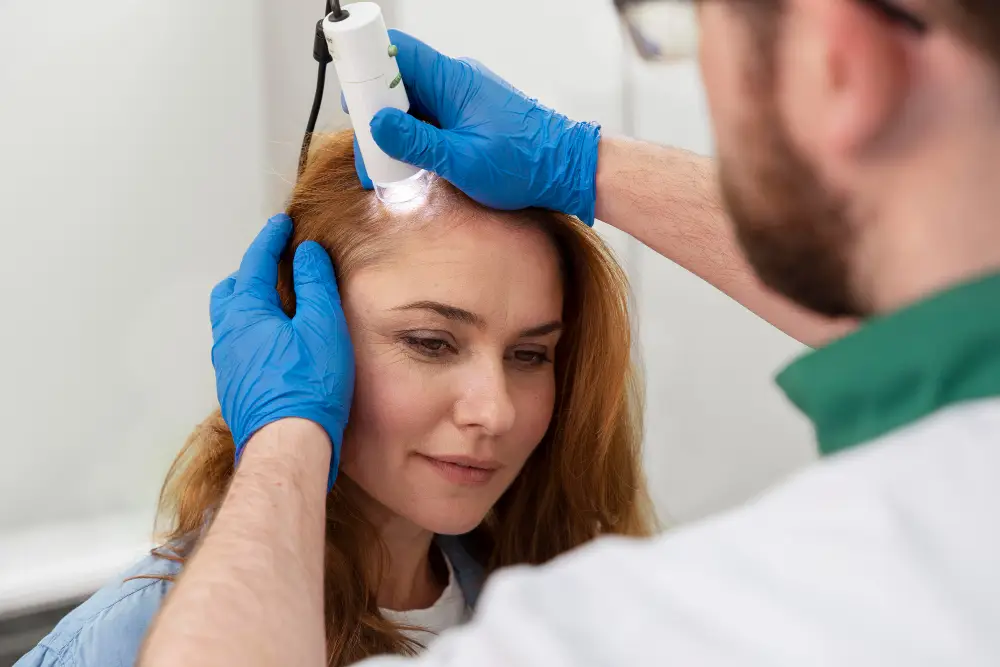Stem Cells Stroke Treatment: Understanding Your Pathways to Recovery
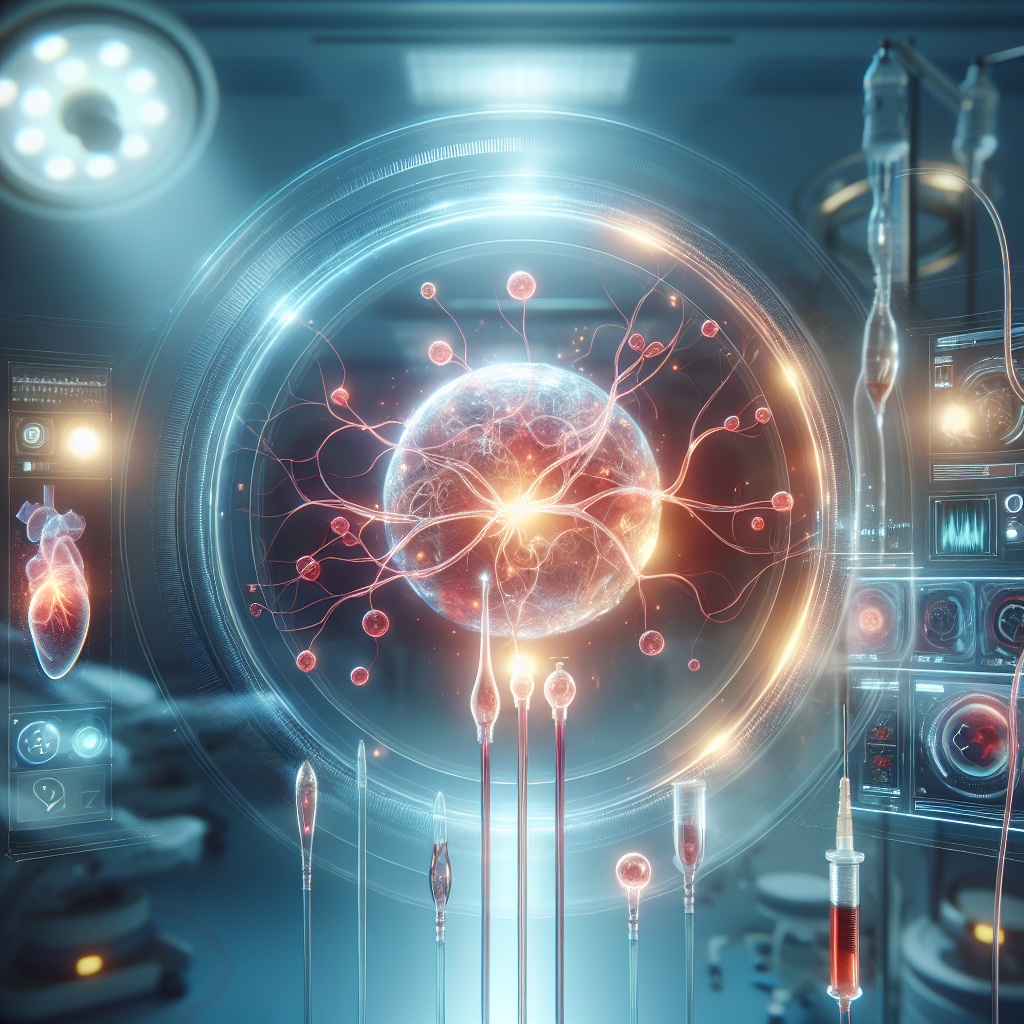
Stem Cells Stroke Treatment: Navigating Pathways to Neurorehabilitation and Functional Improvement
Key Takeaways
- **Understanding the Science:** Stem cell research for stroke recovery focuses on neurorehabilitation, functional improvement, and neural repair by promoting tissue regeneration and reducing inflammation.
- **Beyond Conventional Care:** While standard care is crucial, many seek advanced pathways, especially when recovery plateaus.
- **Pereira, Colombia Advantage:** Offers a unique blend of robust medical infrastructure, dedicated patient support, and a holistic environment conducive to recovery, with an emphasis on personalized care.
- **Informed Decision-Making:** Choosing an advanced pathway requires thorough education and understanding of the ethical and regulatory landscape.
- **The Regencord Difference:** Our team focuses on transparent education and facilitating access to potential regenerative medicine pathways for stroke survivors.
Table of Contents
- Introduction: The Evolving Landscape of Stroke Recovery
- The Stakes: Critical Implications of Stroke and the Search for Regeneration
- The Conventional Approach in the USA: Progress and Plateaus
- The Pereira, Colombia Advantage: A Holistic Environment for Advanced Neurorehabilitation
- Your Guide: The Pereira Recovery Compass
- Our Regenerative Philosophy & Approach: Education, Ethics, and Empowerment
- Overcoming Common Hesitations: Why Seeking Clarity is a Strategic Advantage
- Glossary of Key Terms
- Frequently Asked Questions (FAQ)
- Next Steps: Your Confidential Case Review
Introduction: The Evolving Landscape of Stroke Recovery
A stroke, often a sudden and life-altering event, can leave individuals grappling with a range of challenges, from physical impairments to cognitive difficulties. While conventional rehabilitation has achieved remarkable progress, many survivors and their families continue to seek every possible avenue for functional improvement and enhanced quality of life. This search often leads to the intriguing, yet complex, realm of stem cells stroke treatment.
Our goal at Regencord, based in Pereira, Colombia, is to provide a clear, ethically grounded, and comprehensive resource on the potential pathways for stroke recovery, with a particular focus on the science of regenerative medicine. We understand the anxieties and hopes that accompany this journey. This guide is designed to empower you with verifiable information, helping you navigate the scientific landscape and understand how a destination like Pereira could offer a unique approach to neurorehabilitation.
The Stakes: Critical Implications of Stroke and the Search for Regeneration
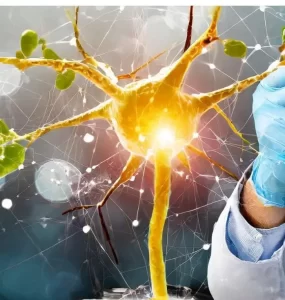
Stroke remains a leading cause of long-term disability worldwide, profoundly impacting not only survivors but also their families and healthcare systems. According to the World Health Organization (WHO), millions suffer strokes each year, and a significant portion live with lasting neurological deficits. These deficits can range from motor weakness (hemiparesis) and speech difficulties (aphasia) to cognitive impairment and emotional changes.
The human brain, though remarkably resilient, has limited capacity for neural repair after injury. A stroke deprives brain cells of oxygen and nutrients, leading to cell death and functional disruption. The immediate medical response focuses on minimizing damage, followed by intensive neurorehabilitation aimed at helping the brain reorganize and compensate for lost functions. While effective, conventional therapies often reach a plateau, leaving many patients with residual impairments.
This reality drives the continuous search for innovative solutions, and stem cells stroke treatment has emerged as a promising area of scientific inquiry. Researchers are exploring how different types of stem cells might contribute to recovery by:
- **Replacing Damaged Cells:** Though complex, some research investigates the potential for stem cells to differentiate into new neural cells.
- **Modulating Inflammation:** Stem cells can release factors that reduce inflammation in the damaged brain, potentially limiting secondary injury.
- **Promoting Angiogenesis:** Encouraging the formation of new blood vessels, improving blood flow to injured areas.
- **Releasing Trophic Factors:** Secreting substances that support the survival and growth of existing neurons, fostering an environment conducive to neural repair.
- **Facilitating Neuroplasticity:** Enhancing the brain’s ability to reorganize and form new connections, which is fundamental to functional improvement during rehabilitation.
It’s important to note that much of this work is still in various stages of clinical investigation. The U.S. National Institutes of Health (NIH) actively supports numerous studies exploring these mechanisms, and databases like ClinicalTrials.gov list ongoing trials worldwide, indicating the significant scientific interest in this field.
The Conventional Approach in the USA: Progress and Plateaus
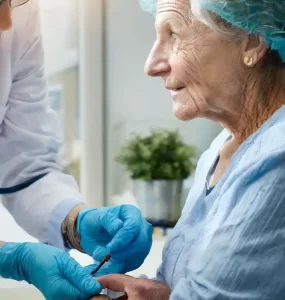
In the United States, stroke care is highly advanced, following established protocols from immediate emergency intervention to comprehensive post-stroke rehabilitation. The U.S. healthcare system, guided by organizations like the NIH and the American Heart Association, emphasizes rapid diagnosis, clot-busting medications (like tPA), and, when appropriate, mechanical thrombectomy to restore blood flow to the brain.
Following the acute phase, patients typically enter a rigorous neurorehabilitation program. This may involve physical therapy, occupational therapy, and speech therapy, tailored to address specific deficits. The goal is to maximize independence and functional improvement. While these therapies are the cornerstone of recovery, patients often experience a plateau in their progress after the initial months or a year. Access to intensive, prolonged rehabilitation can also be constrained by insurance coverage, geographical location, or the availability of specialized facilities.
Regarding stem cells stroke treatment, the U.S. Food and Drug Administration (FDA) currently considers most stem cell therapies for stroke to be experimental. While research is ongoing in FDA-approved clinical trials (which can be found on ClinicalTrials.gov), commercial clinics offering unapproved stem cell treatments outside of these trials are largely unregulated and may pose significant safety risks. This creates a challenging environment for patients seeking advanced options, often leading them to look beyond conventional pathways and national borders.
The Pereira, Colombia Advantage: A Holistic Environment for Advanced Neurorehabilitation
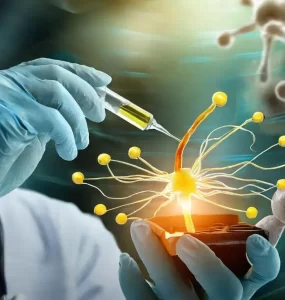
For many patients seeking alternatives or extensions to their conventional stroke recovery journey, the prospect of international medical care can be daunting. Yet, destinations like Pereira, Colombia, offer compelling advantages that address many of the limitations and concerns faced by stroke survivors from countries like the USA.
Robust Medical Infrastructure and Regulatory Oversight
Colombia has invested significantly in its healthcare system, earning international recognition for its quality and accessibility. Pereira, a vibrant city in the heart of the Coffee Axis region, is home to modern medical facilities and highly trained medical professionals. The Colombian Ministry of Health and Social Protection (Ministerio de Salud y Protección Social) oversees a national healthcare framework, while INVIMA (Instituto Nacional de Vigilancia de Medicamentos y Alimentos de Colombia) regulates biological products and medical procedures, including those involving regenerative medicine. This provides a structured and supervised environment for advanced pathways.
The Regencord Approach: Personalized and Integrated Care
At Regencord, our commitment goes beyond just access to advanced pathways. We emphasize a model of personalized and integrated care that is often distinct from high-volume systems found elsewhere.
- **Synthesized Contextual Insight 1: Beyond the Clinic Walls:** We believe true recovery extends beyond the hospital. Pereira offers a unique, supportive environment where the healing process integrates with a rich natural setting. The tranquil surroundings, often vibrant with nature, are thought to aid psychological well-being and physical recovery, complementing dedicated clinical neurorehabilitation. This holistic atmosphere, deeply woven into the Regencord patient journey, supports the intricate process of neural repair in a way that is difficult to replicate in purely clinical or urban settings.
- **Synthesized Contextual Insight 2: Dedicated Time and Personalized Attention:** Unlike systems where physician time may be constrained, our approach in Pereira allows for a greater dedication of time to each patient. This means more thorough assessments, more intensive one-on-one therapy sessions, and a truly bespoke approach to functional improvement. This personalized attention, derived from our deep experience facilitating international medical care, allows for nuanced adjustments to treatment and rehabilitation plans, fostering a more responsive and effective recovery trajectory.
Comprehensive Support for International Patients
Navigating international travel and a new healthcare system can be overwhelming. Regencord understands these challenges and provides comprehensive support:
- **Travel and Logistics Coordination:** Assistance with flights, ground transportation, and accessible accommodation.
- **Language and Cultural Support:** Professional interpretation services ensure clear communication with medical teams and local immersion.
- **Patient Advocacy:** A dedicated team guides patients through every step, from initial inquiry to post-treatment follow-up.
- **Focus on Neurorehabilitation:** Advanced pathways are always integrated with robust neurorehabilitation programs, ensuring that any potential for neural repair is maximized through functional training.
Choosing Pereira means opting for a destination where a commitment to advanced healthcare meets a profound understanding of the patient journey, all within a culturally rich and naturally beautiful setting.
Your Guide: The Pereira Recovery Compass
Charting Your Course to Stroke Recovery in Pereira
To help demystify the journey and provide a clear roadmap for those considering regenerative medicine pathways for stroke recovery, we’ve developed **The Pereira Recovery Compass**.
This branded patient resource is a practical checklist and guide designed to help you organize your thoughts and prepare for a confidential case review. It covers:
- **Self-Assessment Points:** Questions to consider regarding your current stroke recovery status, goals for functional improvement, and specific challenges.
- **Information Gathering Checklist:** A list of medical records and diagnostic images you’ll need to have ready for a thorough review.
- **Logistical Planning Prompts:** Key considerations for travel, accommodation, and accompanying caregivers, designed to alleviate anxiety about the practicalities of seeking care abroad.
- **Understanding Expectations:** Prompts to help you articulate your hopes and concerns, ensuring a productive discussion about realistic outcomes for stem cells stroke treatment pathways.
- **Questions for the Regencord Team:** A structured list of questions to ask during your confidential case review to ensure all your information gaps are addressed regarding neurorehabilitation and potential advanced pathways.
The Pereira Recovery Compass is a testament to our commitment to transparent education and patient empowerment, ensuring you feel prepared and confident at every stage of your exploration.
Our Regenerative Philosophy & Approach: Education, Ethics, and Empowerment
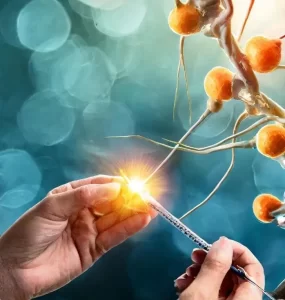
At Regencord, our philosophy is rooted in a deep respect for the patient’s journey and a commitment to ethical, evidence-informed practices. We understand that the field of regenerative medicine, particularly for complex conditions like stroke, is dynamic and requires careful consideration.
Our approach to stem cells stroke treatment pathways is fundamentally educational and non-promissory:
- **Focus on Individualized Assessment:** We believe that no two stroke recoveries are identical. Our process begins with a thorough, confidential case review to understand your specific condition, medical history, and recovery goals. This assessment helps determine if you may be a candidate for the regenerative medicine pathways available through the team at Regencord in Pereira, Colombia, always with an eye toward potential for functional improvement.
- **Integration with Neurorehabilitation:** We firmly hold that advanced regenerative approaches are most effective when integrated within a comprehensive neurorehabilitation program. This synergistic approach aims to maximize the brain’s capacity for adaptation and neural repair, translating any biological potential into tangible functional gains.
- **Transparency and Ethical Standards:** We are dedicated to transparently presenting the current scientific understanding, the regulatory landscape in Colombia, and the ethical considerations surrounding regenerative medicine. We align with international best practices and the oversight of entities like INVIMA to ensure responsible care.
- **Empowerment Through Knowledge:** Our primary goal is to empower you with accurate, understandable information, allowing you to make an informed decision that aligns with your values and recovery objectives. We present options and potential pathways, fostering hope built on credible science, not unverified assertions.
We are not here to promise a rapid or miraculous outcome. Instead, we are here to offer a potential pathway for comprehensive care, rigorous neurorehabilitation, and access to evolving regenerative techniques within a supportive, ethical, and patient-focused environment.
Overcoming Common Hesitations: Why Seeking Clarity is a Strategic Advantage
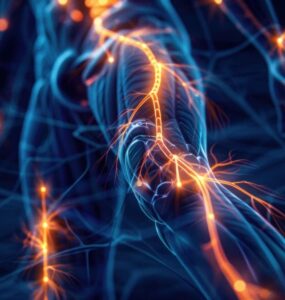
It’s natural to have reservations when considering advanced and international medical options for something as critical as stroke recovery. Many patients express concerns about the safety, legitimacy, and logistics of pursuing stem cells stroke treatment abroad. Let’s address these directly, demonstrating why seeking clarity can transform hesitation into a strategic advantage.
“Is receiving medical care in Colombia safe or legitimate?”
This is a fundamental and valid question. Colombia’s healthcare system is robust and well-regulated. The standards of medical training in the region are high, and facilities are often modern and equipped with advanced technology. Oversight from the Colombian Ministry of Health and INVIMA ensures that medical practices adhere to national guidelines. Regencord is committed to operating within these established legal and ethical frameworks. By focusing on verifiable facts – such as specific government accreditations and the quality of medical infrastructure – we aim to shift your perspective from fear of the unknown to an understanding of a well-regulated, high-standard system that prioritizes patient safety.
“This sounds too complicated and overwhelming. I wouldn’t know where to start.”
The complexity of international travel combined with medical needs can indeed feel daunting. We understand this anxiety. That’s why the team at Regencord has built a comprehensive patient advocacy system designed to simplify every step of your journey. From initial inquiry to coordinating travel, accommodation, local transportation, and providing language support, we meticulously outline a clear, step-by-step pathway. Our role is to transform the perception of a complex process into a manageable, fully supported experience, ensuring you feel guided and cared for, every step of the way towards functional improvement.
“Will I receive quality care comparable to or better than what I get in the USA?”
The standard of care is a critical concern. While the USA has excellent facilities, the personalized attention and comprehensive, integrated approach offered in Pereira can be a significant differentiator. Our focus on dedicated time for each patient, combined with state-of-the-art facilities and a profound commitment to neurorehabilitation, often allows for a more tailored and intensive recovery program. The goal is not just comparable care, but a distinctive patient experience that leverages the unique contextual advantages of Pereira, ensuring a comprehensive strategy for potential neural repair and recovery.
“What if it doesn’t work? Is it a waste of time and resources?”
The desire for definitive outcomes is understandable, especially after a stroke. However, in the evolving field of regenerative medicine for stroke, it’s crucial to approach expectations with realism and an understanding of the ongoing research. We never guarantee outcomes. Instead, we focus on providing access to potential pathways for stem cells stroke treatment within an environment dedicated to maximizing your potential for functional improvement through rigorous neurorehabilitation. By emphasizing thorough candidacy review, ethical practice, and comprehensive support, we offer an opportunity to explore advanced options, understanding that the investment is in pursuing every credible avenue for recovery, grounded in science and compassionate care.
Glossary of Key Terms
- **Stem Cells Stroke Treatment:** An investigational area of regenerative medicine exploring the use of various types of stem cells to promote recovery, neural repair, and functional improvement after a stroke. This involves potential mechanisms such as reducing inflammation, promoting angiogenesis, and releasing growth factors.
- **Neurorehabilitation:** A comprehensive medical process aimed at helping individuals recover from nervous system injuries, such as stroke. It involves therapies like physical, occupational, and speech therapy to regain lost functions and maximize independence.
- **Functional Improvement:** The enhancement of an individual’s ability to perform daily activities and tasks, often measured in terms of mobility, communication, self-care, and cognitive function, post-stroke.
- **Neural Repair:** The biological processes involved in healing and regenerating damaged nerve tissue in the brain or spinal cord. This can include the formation of new neurons, synapses, or the repair of existing neural pathways after injury like a stroke.
- **Neuroplasticity:** The brain’s ability to reorganize itself by forming new neural connections throughout life. This vital process allows neurons to compensate for injury and disease and adjust their activities in response to new situations or changes in the environment, underpinning much of stroke recovery.
- **INVIMA:** Colombia’s National Food and Drug Surveillance Institute (Instituto Nacional de Vigilancia de Medicamentos y Alimentos), responsible for regulating and overseeing medical products, devices, and biological therapies within Colombia.
Frequently Asked Questions (FAQ)
What exactly are stem cells, and how might they help after a stroke?
Stem cells are unique cells that have the ability to develop into many different cell types in the body (differentiation) and to self-renew. In the context of stroke recovery, research suggests they may help by promoting a beneficial environment for neural repair. This can include reducing inflammation, secreting growth factors that protect existing brain cells, stimulating the formation of new blood vessels, and enhancing the brain’s natural neuroplasticity, all contributing to functional improvement. It’s an active area of scientific study, and current pathways focus on supporting the body’s own healing mechanisms.
Is stem cell treatment for stroke approved by regulatory bodies like the FDA?
In the USA, the FDA generally considers most stem cell treatments for stroke to be investigational. They are primarily available through approved clinical trials. In Colombia, INVIMA regulates biological products, and any regenerative medicine pathways facilitated by Regencord adhere to the ethical and legal frameworks established by Colombian health authorities. We focus on transparently presenting options within these guidelines, emphasizing that these are not “cures” but potential pathways integrated with neurorehabilitation.
What does the patient journey to Regencord in Pereira, Colombia, typically involve?
The journey begins with a confidential case review where our team assesses your medical history and specific needs. If you are deemed a potential candidate, we then assist with all logistical planning, including travel, accommodation, and local support. Upon arrival in Pereira, you’ll undergo thorough clinical evaluations, and if appropriate, access to regenerative medicine pathways is facilitated, always combined with an intensive neurorehabilitation program. Our patient advocacy team supports you throughout, ensuring a seamless and comfortable experience focused on your functional improvement goals.
What kind of rehabilitation can I expect alongside stem cell pathways?
A cornerstone of the Regencord approach is the integration of advanced pathways with robust and personalized neurorehabilitation. This typically includes physical therapy to improve strength and mobility, occupational therapy to enhance daily living skills, and speech therapy for communication and swallowing difficulties. The intensity and duration of rehabilitation are tailored to your individual needs and potential for functional improvement, ensuring that any biological support from regenerative approaches is maximized through active functional engagement.
How long would I need to stay in Pereira for treatment and rehabilitation?
The duration of stay is highly individualized and depends on your specific condition, the recommended pathways, and your recovery goals. After your confidential case review, our team can provide a more accurate estimate of the potential timeframe for the proposed regenerative medicine pathways and intensive neurorehabilitation. Our aim is to provide comprehensive care that allows ample time for both the biological aspects and the crucial rehabilitation phase to foster functional improvement.
Next Steps: Your Confidential Case Review
Ready to explore the potential for advanced pathways in stroke recovery?
Discover if you are a candidate for the regenerative medicine pathways available through the team at Regencord in Pereira, Colombia. Contact us for a confidential case review.
This article is for informational and educational purposes only and does not constitute medical advice or a guarantee of outcome. It is not intended to diagnose, treat, or offer a cure for any condition. The information presented herein is strictly based on scientific evidence from the cited authoritative references. Individual results may vary. All decisions regarding medical care should be made in consultation with a qualified healthcare provider. Veris Salus LLC acts as a marketing and patient-coordination facilitator for services provided by the team at Regencord in Pereira, Colombia.
